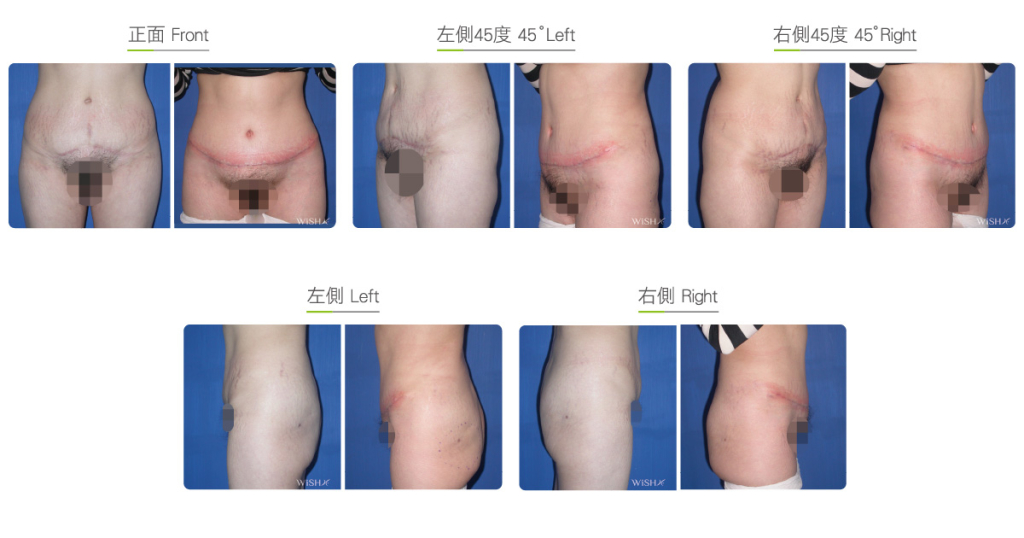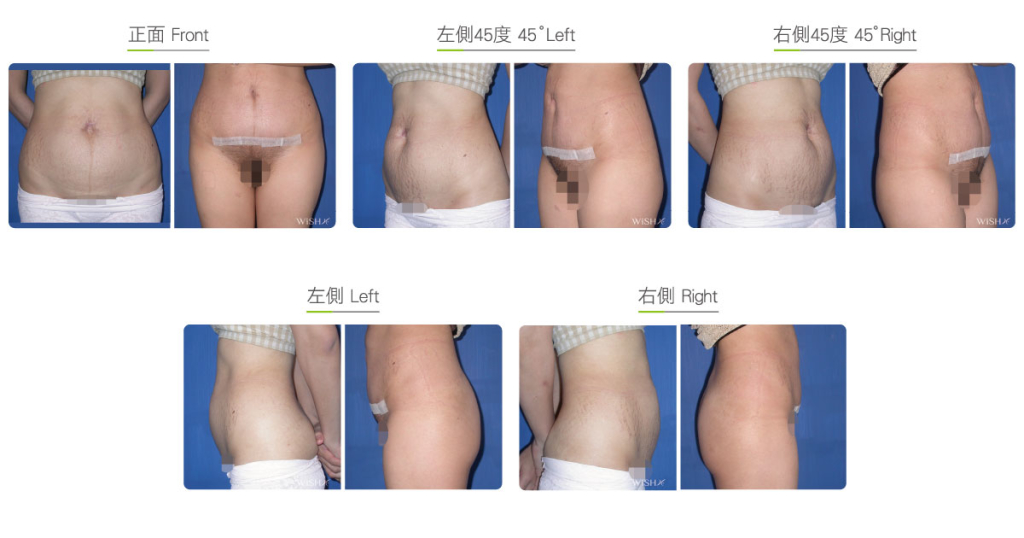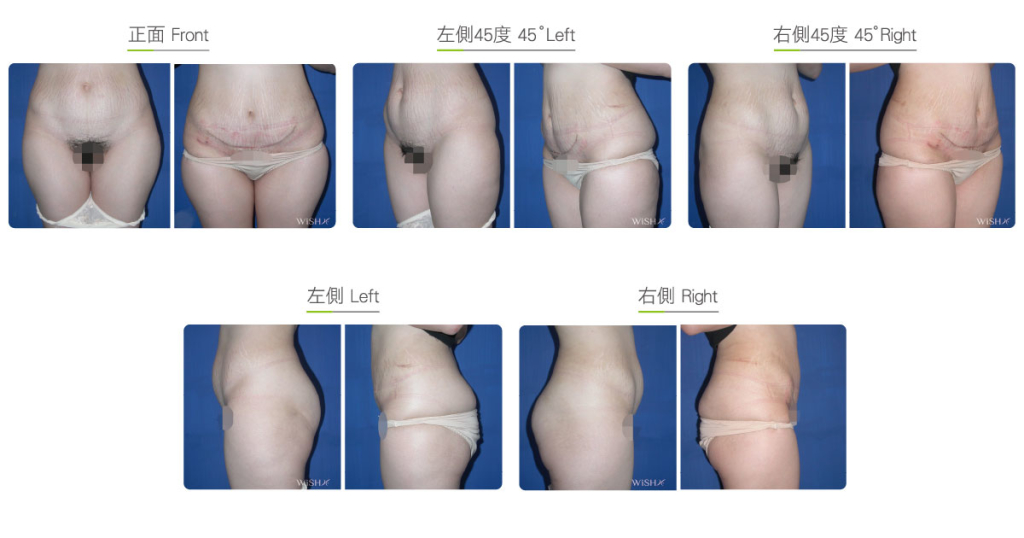Lower Abdominoplasty
This is also called partial or lower tummy tuck. Its procedures are similar to those of complete abdominoplasty, but the surgical field is limited to the area from the pubic superior margin to the navel, with no change made to the upper abdomen and navel position. Therefore, the surgical incision is reduced to less than 25 cm to avoid the scar of navel reconstruction (umbilicoplasty). This surgery is also conducted by making a transverse incision near the bikini line and then detaching the skin from muscles to tighten the stitching of the regional rectus abdominis muscle (lower segment of the navel) and liposuction of bilateral waists before the resection of the lower abdominal skin and fat tissues. Patients may leave after the general anesthesia is full recovered without necessity of admission in the hospital.
Because the surgical incision and extent are smaller than those by full tummy tuck, postoperative recovery is relatively fast and the pain is mild, and the drainage tube is removed within approximately 5–7 days. Patients who want to lower the swelling or recovery period can choose a fibrin gel to promote internal wound healing and reduce complications such as subcutaneous blood stasis or hematoma.
Surgical conditions
Duration
- Type of anesthesia: General anesthesia
- Type of incision: An incision of less than 25 cm at the lower abdomen (superior to the pubes)
- Recovery: 3–5 days
- Removal of stitches: 10–14 days
General instructions
No food and water on the day of surgery
- Avoid abdominal exertion for 1 month postoperatively.
- Avoid strenuous abdominal activities for 3 months postoperatively.
- Wear a compression garment for 3 months postoperatively to promote the recovery and tightening of the abdomen.
- Take care of the scar frequently for 6 months postoperatively.
Ideal candidates
- Patients with indistinct mild to moderate abdominal laxity and droopiness
- Those with abdominal looseness or stretch marks limited to the lower abdomen
- Those with natural abdominal aging or laxity due to causes other than obesity or pregnancy
- Those with scar adhesion or abdominal deformity due to a prior cesarean section or laparotomy
- Those who are unable to accept the long wound or scar of a full tummy tuck
Possible complications
- Subcutaneous seroma
- Hematoma
- Poor wound healing
- Scar proliferation
- Navel deformity
- Decreased skin sensitivity (temporary)
Surgical advantages
-
The surgery is limited to the lower abdomen, and the postoperative recovery is relatively fast.
-
Postoperative pain is less than that from a full tummy tuck.
-
The surgical incision is relatively short, which lowers the probability of scar proliferation.
-
It effectively improves lower abdominal stretch marks.
-
It redresses lower abdominal prominence.
Surgical disadvantages
-
Surgical resection is less extensive and unable to redress upper abdominal laxity.
-
It is unable to resolve stretch marks or skin folds near the navel.
-
The navel may become deformed due to abdominal stretching.
-
Upper abdominal prominence (stomach prominence) may not be effectively improved.
-
Sculpting of the waists is less significant.
Possible procedures in conjunction
-
Abdominal liposuction
-
Saddle area liposuction
Before & After
Lower Abdominoplasty



